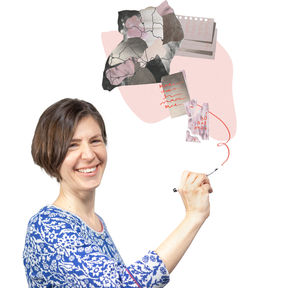Oops: Research data at the mercy of weather and insects

‘When I was completing my PhD in economics at Stockholm University, I was really interested in development economics. For my final paper, I focused on loans in developing countries and joined a joint research project with a Ugandan-based NGO focused on microfinance.
In the research we started in 2012, we evaluated the NGO’s savings programme in a remote area of Uganda in which young women were participating. The organisation had nine small offices, and each had a programme assistant. In all, 1500 people were divided into 100 savings groups.
Each group was supposed to elect leaders who were to oversee savings- and loans in the group and record savings- and loan-related data in logbooks. Because of a conflict in the area at the time, we weren’t able to travel there in person, so we provided local contacts with instructions.
Bit by bit, I received data from the local offices. I decided to look at who had received loans, how much the group saved, who remained in the group. But the data was patchy, and there were many names I couldn’t match with people who had completed the initial survey.
In 2015, I visited Uganda to do a follow-up survey and collect administrative data.
I had planned to visit all the local offices to take photos of the record books. But when I started talking to the local offices, I noticed that they didn’t have any records or data. So, I had to visit each of the 100 small meeting places separately to look at their logbooks.
Often, the group’s logbooks were stored in mud huts. The data was patchy as pens weren’t always accessible, and sheets from the books had been torn out and used for other things. Some of the books had been damaged by rain or insects.
It was a stressful experience as I realised, once again, I couldn’t use the data. I had the feeling that perhaps nothing in our project had gone according to plan. I felt like the situation was hopeless and that I wouldn’t be able to write my paper on the project and might not finish my PhD on time.
When I returned to the project’s local office in the area’s biggest town, I was pleased to find documents that I could use. I found each group’s leader’s name and the reason for the discrepancy in how the project had been managed.
With this information, I was able to find a different angle for my research and conduct a follow-up survey to get enough consistent data. The resulting paper was critical for completing my studies.’
Text: Saana Kallioinen.
Portrait: Kalle Kataila. Illustration: Noora Typpö.
This article will be published in the Aalto University Magazine issue 28, May 2021 (facsimile copy on issuu.com).
- Published:
- Updated:
Read more news

DeployAI Partners Gather for Heart Beat Meeting in Helsinki
The European DeployAI project's partners gathered for the Heart Beat meeting hosted by Aalto University Executive Education in Helsinki.
Aalto computer scientists in ICML 2024
Computer scientists in ICML 2024
In low-hierarchy organisations, even key policy issues are discussed in Slack
In a recent study, Aalto University alumn Lauri Pietinalho, a visiting scholar at New York University's Stern School of Business, and Frank Martela, an assistant professor at Aalto University, investigated how low-hierarchy organisations deal with shared policies in confrontational situations and how authority functions within them.